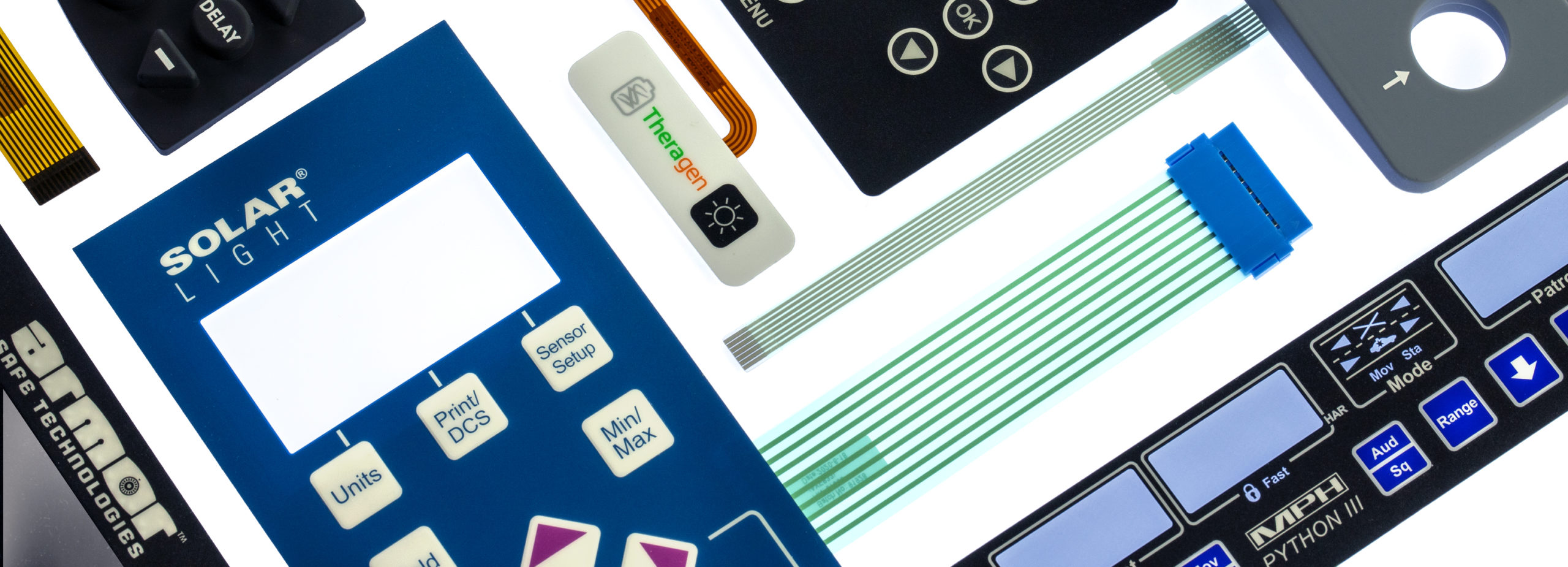Innovative Membrane Switch Solutions for Customized Control Panels
Innovative Membrane Switch Solutions for Customized Control Panels
Blog Article
Comprehending Membrane Switches Over: The Trick to Durable and Reputable Controls

What Are Membrane Layer Buttons?
Membrane switches are an advanced solution in the realm of interface modern technology, integrating capability and design flawlessly. These devices act as a user interface in between users and digital systems, integrating a number of components into a portable style. Normally built from versatile, thin layers of materials, membrane buttons are developed to reply to touch, making it possible for individuals to connect with equipment and electronic gadgets efficiently.
The primary aspects of a membrane layer button consist of a printed circuit layer, graphic overlay, and a spacer layer that prevents unintentional activation. The visuals overlay can be customized to reflect brand name identification or individual choices, boosting appearances while making certain use. Membrane switches are frequently used in numerous applications, consisting of medical tools, consumer electronic devices, and commercial tools, owing to their longevity and resistance to environmental aspects such as wetness and dust.
Among the vital advantages of membrane buttons is their ability to withstand wear and tear, making them optimal for high-traffic settings. Furthermore, they are light-weight and need very little space, enabling for innovative layouts in item development. Generally, membrane changes represent a sensible and efficient selection for modern digital interfaces, weding innovation with user-centric layout principles.
Just How Membrane Switches Work
The procedure of membrane changes hinges on a straightforward yet effective device that equates customer input into electronic signals. When a customer presses the button, the leading layer warps, enabling a conductive component in the circuit layer to make contact with an equivalent conductive pad on the underside of the graphic overlay.
The layout of membrane layer switches can vary, but they usually include domes or responsive components to offer feedback to the user, improving the general experience - membrane switch. The products used in membrane buttons, such as polyester or polycarbonate, add to their toughness and resistance to environmental variables, consisting of moisture and dirt. In addition, the printed circuits are commonly enveloped, which safeguards them from deterioration in time.
Benefits of Membrane Layer Switches

Furthermore, membrane switches are understood for their sturdiness. Constructed from durable products, they are resistant to dust, dampness, and physical wear, which considerably prolongs their life expectancy compared to conventional mechanical buttons. This sturdiness makes them particularly appropriate for high-traffic environments and applications needing longevity.
Another significant benefit is the ease of cleaning and maintenance. The smooth surface area of membrane changes decreases dust build-up and is frequently invulnerable to spills, making them optimal for settings that require constant sanitization.
Furthermore, membrane layer buttons offer a structured account, bring about a thinner design that can be incorporated into different devices without adding mass. This function not just boosts the visual appeal yet additionally contributes to a more ergonomic item design.
Applications of Membrane Switches
User-friendly and flexible, membrane layer buttons find applications throughout a vast array of sectors, consisting of clinical gadgets, consumer electronics, and industrial equipment. In the clinical field, these buttons are important to tools such as analysis tools, person surveillance systems, and mixture pumps, where dependability and convenience of cleaning are crucial. Their capability to keep and endure rough atmospheres capability makes them excellent for such applications.

In consumer electronic devices, membrane layer buttons are utilized in products like microwaves, washing machines, navigate to this site and push-button controls - membrane switch. Their smooth layout permits for intuitive interface, improving the total individual experience while giving toughness and resistance to look at these guys tear and put on
Commercial equipment additionally profits from membrane switches, specifically in control panels for equipment and automation systems. These switches provide protection versus dust and dampness, guaranteeing consistent efficiency in tough settings. In addition, their adjustable attributes enable makers to customize them to particular operational needs, boosting efficiency and functionality.
Selecting the Right Membrane Switch
When selecting a membrane button, it is essential to think about numerous aspects that influence performance and viability for details applications. The primary considerations include environmental problems, responsive responses, durability, and layout specifications.
First, evaluate the operating environment; buttons revealed to moisture, chemicals, or severe temperatures call for specific products to guarantee longevity and capability. Next, examine the demand for tactile feedback. Relying on customer communication, some applications might profit from a tactile action to verify activation, while others might prefer a non-tactile style for visual reasons.
Sturdiness is one more crucial variable; membrane layer switches ought to be created to hold up against frequent use, influences, and abrasion. Guarantee the chosen switch can sustain the expected lifecycle, particularly in high-usage circumstances.

Conclusion
Finally, membrane layer switches over offer as vital elements in the design of trusted and durable control systems across numerous sectors. Their portable style, integrated with durable construction and customizable attributes, enhances individual communication while making sure durability sought after atmospheres. The adaptability of membrane switches over enables for customized solutions that fulfill certain functional requirements, reinforcing their importance in modern-day technology. As sectors proceed to develop, the significance of incorporating effective membrane switch solutions can not be overstated.
Membrane switches over stand for an important facet of modern user interface layout, blending important site performance with durability in numerous applications.Membrane layer buttons are an advanced service in the world of individual interface modern technology, combining capability and design perfectly. Normally built from versatile, thin layers of products, membrane buttons are developed to react to touch, making it possible for individuals to interact with machinery and digital gadgets efficiently.
The layout of membrane layer buttons can differ, however they typically integrate domes or responsive aspects to give comments to the user, boosting the total experience.In verdict, membrane switches serve as necessary elements in the style of trustworthy and long lasting control systems throughout numerous industries.
Report this page